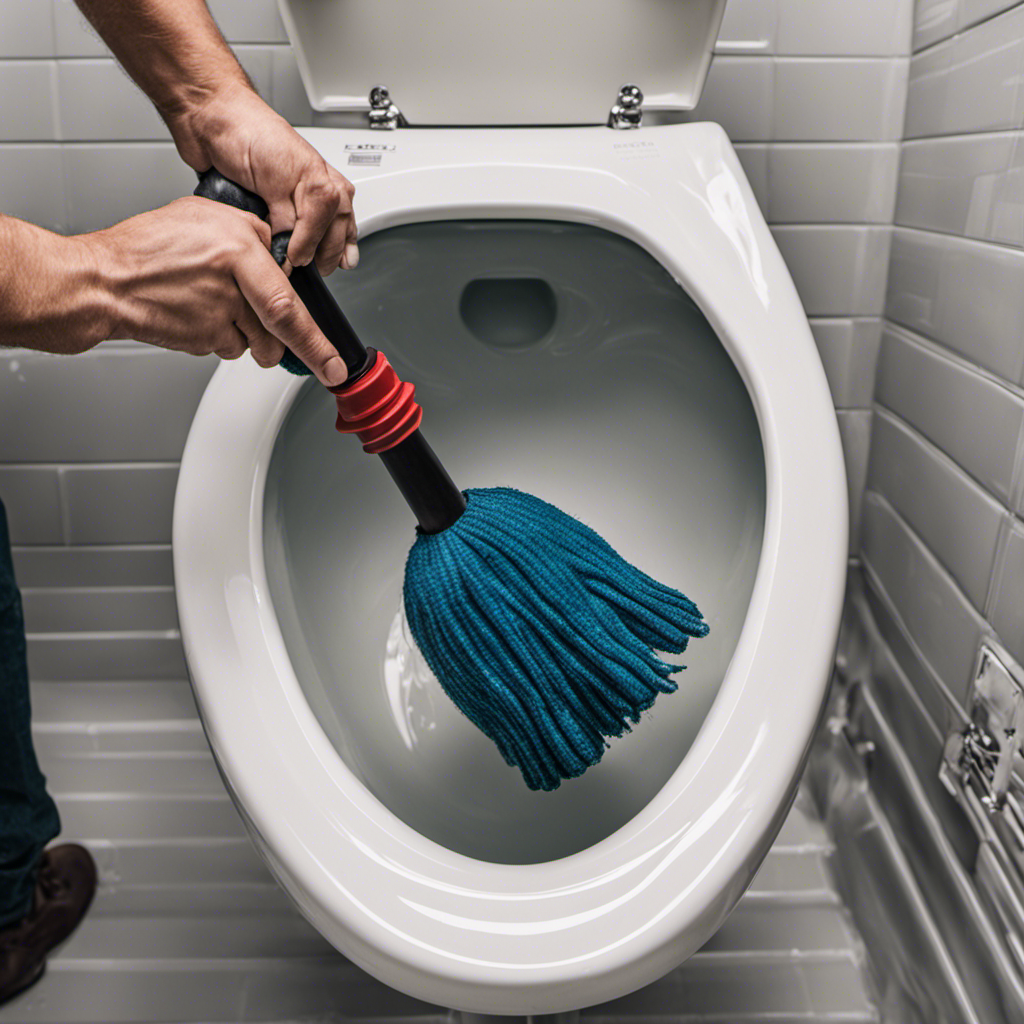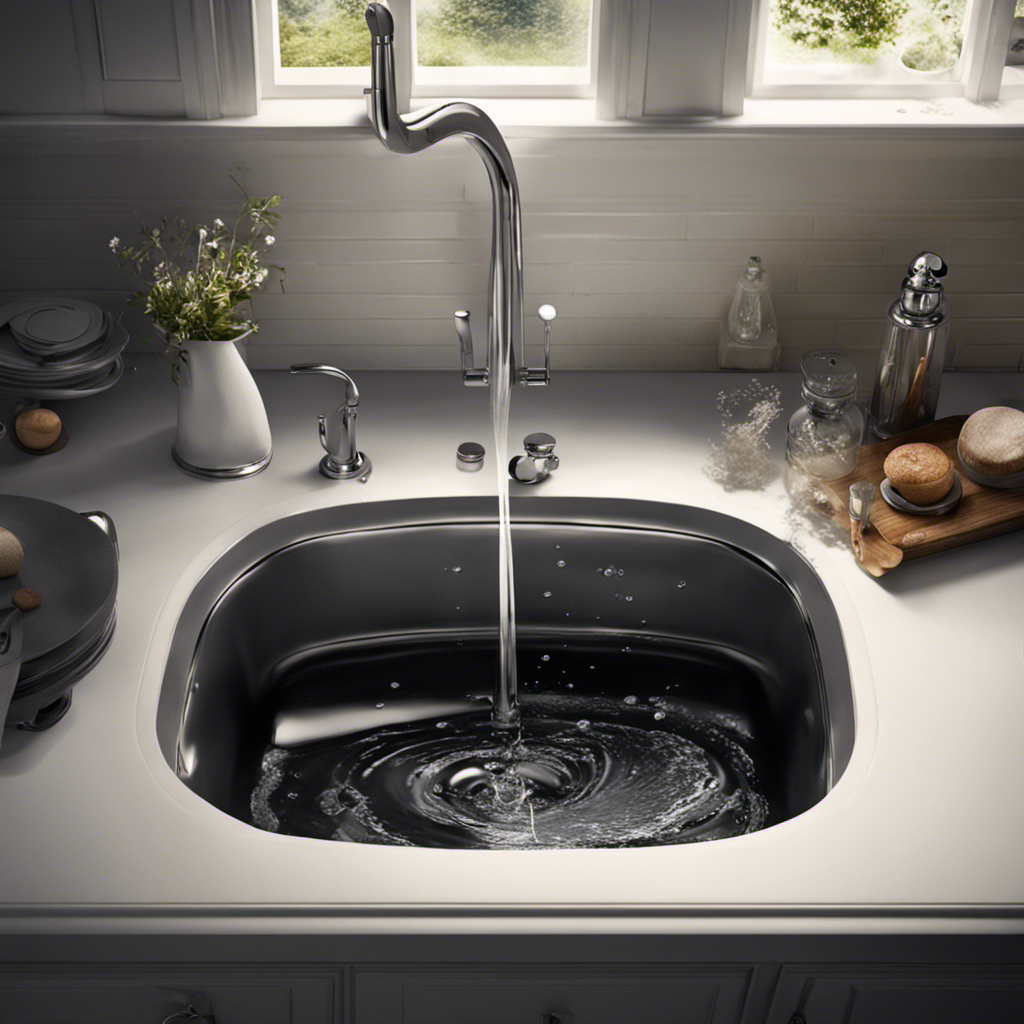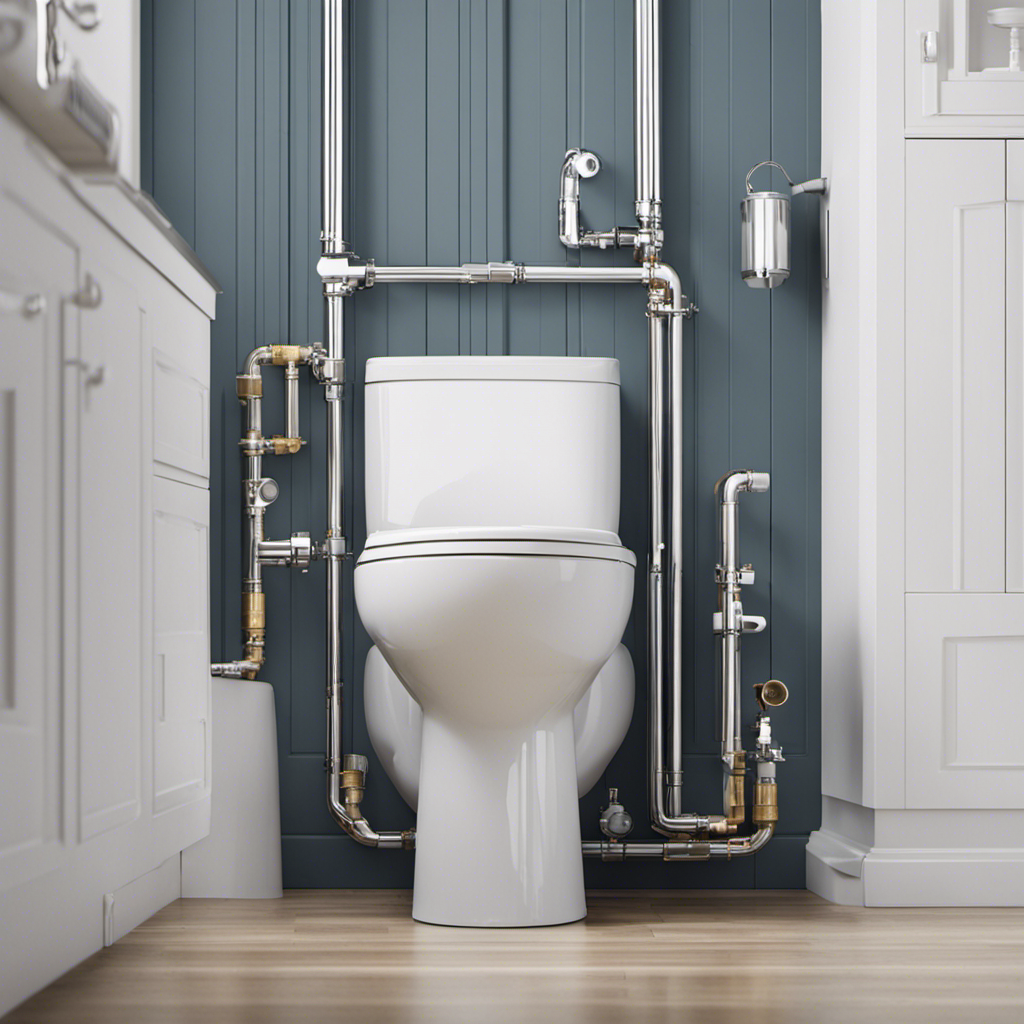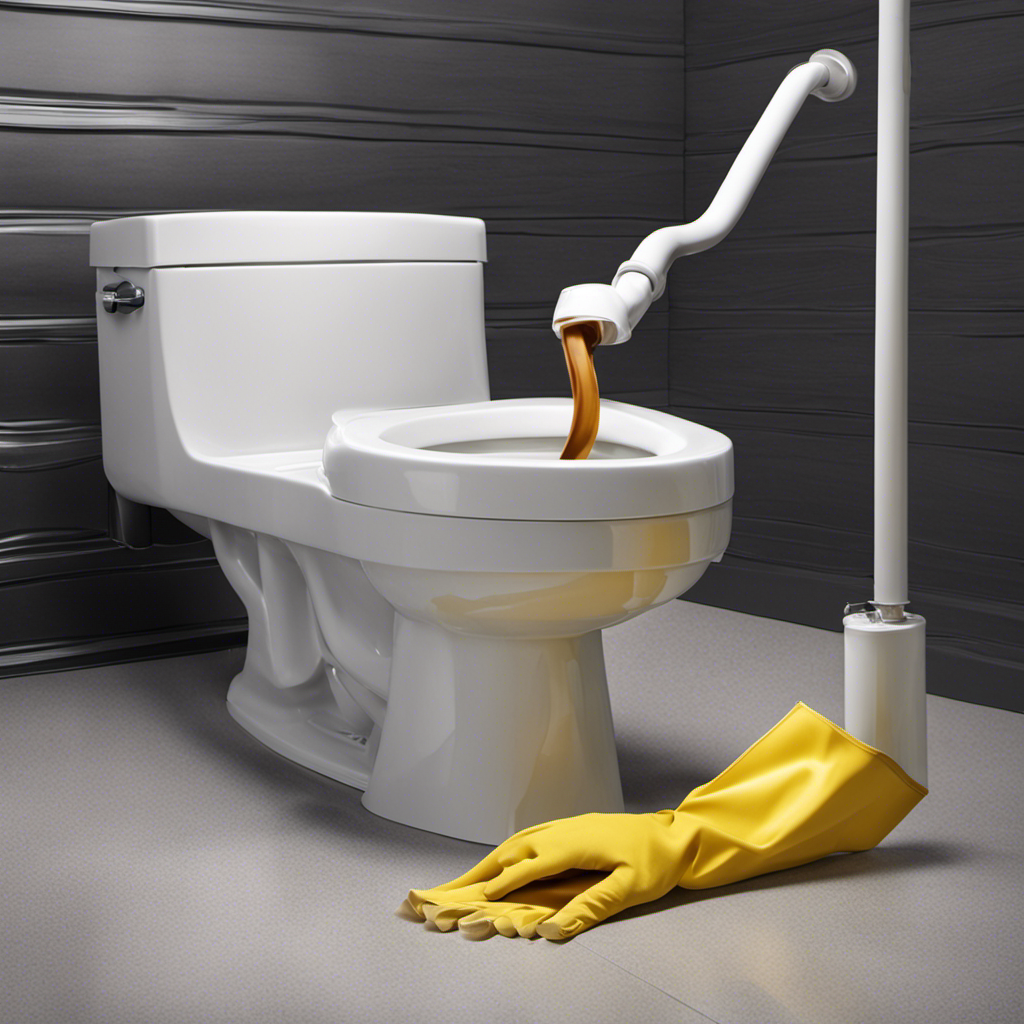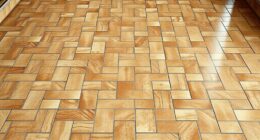I’ve been there – standing in my bathroom, watching in horror as the water in the toilet rises higher and higher. But fear not, because I’m here to share my knowledge on how to unclog a toilet.
In this article, I’ll guide you through the step-by-step process, provide tips on preventing clogs, and even offer DIY solutions. So, whether you’re dealing with a minor blockage or a stubborn clog, I’ve got you covered.
Let’s dive in and get that toilet flowing smoothly again!
Key Takeaways
- The essential tools and materials needed for unclogging a toilet include a plunger, rubber gloves, a bucket, and a toilet auger.
- The step-by-step process for unclogging a toilet involves using a plunger to create suction and pushing the clog through the pipes, and using a toilet auger for stubborn clogs.
- Common causes of toilet clogs include flushing non-biodegradable items and excessive toilet paper, and signs of a clogged toilet include slow drainage and gurgling noises.
- DIY solutions for unclogging a toilet include using a plunger and a combination of baking soda and vinegar, but if the issue persists, it’s best to call a professional plumber.
Tools and Materials Needed for Unclogging a Toilet
The first step in unclogging a toilet is to gather all the tools and materials you’ll need. To prevent future toilet clogs, it is essential to have a plunger, rubber gloves, a bucket, and a toilet auger on hand.
A plunger is the most common tool used for unclogging toilets. It creates pressure and suction to dislodge the blockage. Rubber gloves are necessary to protect your hands from any potential mess. A bucket is useful to collect any excess water during the unclogging process. Lastly, a toilet auger is a handy tool for tackling stubborn clogs that cannot be resolved with a plunger.
Step-By-Step Guide to Unclog a Toilet
First, you’ll want to gather some essential supplies for this step-by-step guide on how to clear a clogged toilet. The two main tools you’ll need are a toilet plunger and a toilet snake.
The plunger is used to create suction and push the clog through the pipes, while the snake is a flexible tool that can reach deeper into the toilet to break up the clog.
To begin, place the plunger over the drain hole and push down firmly, then pull up quickly to create suction. Repeat this motion several times until the water starts to drain.
If the plunger doesn’t work, you can then use the toilet snake to break up the clog. Insert the snake into the toilet bowl and twist it while pushing it in and out.
Once the clog is cleared, flush the toilet to ensure everything is flowing smoothly.
In the next section, we will discuss the common causes of toilet clogs and how to prevent them.
Common Causes of Toilet Clogs and How to Prevent Them
To prevent toilet clogs, you should be mindful of what you flush down the drain. It’s crucial to understand the common causes of toilet clogs and take necessary precautions to avoid them. Here are a few key points to remember:
- Avoid flushing non-biodegradable items: Items like baby wipes, cotton balls, and sanitary products can easily clog your toilet.
- Watch what you put in the toilet: Grease, oil, and excessive toilet paper can also cause blockages.
- Keep an eye out for warning signs: Slow drainage, gurgling noises, and water backup are indicators of a clogged toilet.
- Use a plunger: A plunger is an effective tool to unclog minor blockages.
- Regular maintenance: Regularly using a drain cleaner or performing a deep clean can help prevent toilet clogs.
DIY Solutions for Unclogging a Toilet
If you’re facing a clog, try using a plunger to clear the blockage. It’s one of the most effective toilet unclogging techniques and can easily be done at home.
To use a plunger, make sure there’s enough water in the bowl to cover the rubber part. Place the plunger over the drain hole and push down firmly, then pull up quickly. Repeat this motion a few times until the water starts to drain.
Another home remedy for toilet clogs is using a combination of baking soda and vinegar. Pour half a cup of baking soda into the toilet bowl, followed by a cup of vinegar. Let it sit for a few minutes, then flush the toilet.
These DIY solutions are simple and can often solve the problem without the need for professional help.
When to Call a Professional Plumber for a Clogged Toilet
When you’re unable to resolve the issue on your own, it may be time to call a professional plumber for help with a clogged toilet. While some clogs can be easily cleared with a plunger or a toilet auger, there are certain signs that indicate a more serious problem that requires professional assistance.
Here are some signs of a serious toilet clog that should prompt you to call a plumber:
- Foul odors coming from the toilet
- Multiple fixtures in the house are backed up
- Water is backing up into the bathtub or shower
- The toilet is overflowing and won’t stop
- Strange gurgling noises coming from the plumbing
If you notice any of these signs, it’s best to leave the job to a professional plumber who can accurately diagnose and fix the issue. They have the expertise and specialized tools to resolve even the most stubborn toilet clogs, ensuring your plumbing system is back to normal in no time.
Frequently Asked Questions
How Do I Know if My Toilet Is Clogged?
If my toilet is clogged, there are signs like water rising to the top when flushed or drains that are slow. Common causes are excessive toilet paper usage or flushing non-flushable items.
Can I Use a Plunger to Unclog a Toilet?
Certainly! Plungers are a popular choice for unclogging toilets. However, there are alternative methods like using a toilet auger or a baking soda and vinegar mixture. Common mistakes include using too much force or not creating a proper seal with the plunger.
What Should I Do if the Plunger Doesn’t Work?
If the plunger doesn’t work, there are alternative methods to try. You can use a toilet auger or a mixture of baking soda and vinegar. If all else fails, it’s time to call for professional help.
Is There a Specific Type of Toilet Paper That Is Less Likely to Cause Clogs?
There isn’t a specific type of toilet paper that guarantees no clogs. However, using thin, single-ply paper or alternatives like bidets can reduce the risk. Remember to dispose of non-flushable items properly to prevent clogs.
Are There Any Home Remedies I Can Try Before Calling a Professional Plumber?
Before calling a professional plumber, you can try some home remedies and DIY solutions to unclog a toilet. These methods include using a plunger, using hot water and dish soap, or using a toilet auger.
Conclusion
To sum it up, unclogging a toilet can be a messy and frustrating experience. However, armed with the right tools and knowledge, it is a problem that can be easily resolved.
By following the step-by-step guide and implementing some preventive measures, you can ensure that toilet clogs become a thing of the past.
Remember, prevention is always better than cure. So, take the necessary precautions and avoid being caught in a sticky situation.
As they say, an ounce of prevention is worth a pound of cure.
